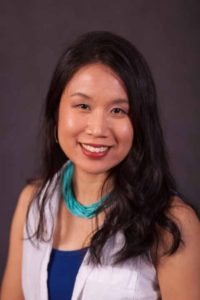By Jennifer Ju
Facing Ourselves

Jennifer Ju
“There is a great melting pot in which we must compound a precious metal. That metal is the metal of nationality.”
These words, spoken by President Woodrow Wilson, appear to echo the sentiment “united we stand, divided we fall” from Patrick Henry’s 1799 speech. However, in the single-minded pursuit of security and unity, assimilation can be weaponized and forced upon many minority and indigenous groups, often with disastrous and tragic results.
The devastating impact of forced assimilation on indigenous people was highlighted once again last month when Pope Francis made history with a public apology for the treatment of Canada’s indigenous people by the Catholic Church via the network of federally funded residential schools, where the primary focus was to force native people’s assimilation into white Canadian culture.
These residential schools ran for over 100 years, from 1883 until 1997, directly impacting seven generations of indigenous people. These schools represented a fraction of the widespread and aggressive plan to force assimilation via erasure of cultures, customs, languages and religions.
Enrollment was involuntary and traumatic, with over 150,000 indigenous children forcibly seized from their families and sent to these residential schools. Children were beaten if they were caught speaking their native language or practicing their customs. Many were sexually abused. Neglect was rampant. Many these children never saw their families again. An estimated 6,000 children died in these schools, but due to poor record keeping (many children’s names were not even recorded), this number is believed to be an undercount of the number who actually perished, with some experts estimating the true number of deaths reaching closer to 25,000.
The Department of Indian Affairs also refused to return the bodies of children who perished in these schools. Using radar technology, over 1,300 unmarked graves were recently discovered near the sites of residential schools, although it is unclear how many of these graves are filled with indigenous children.
These residential schools in Canada were not unique. In fact, they were modeled after schools created throughout the US and other countries, all in an effort to “colonize” indigenous people. The aggressive assimilation tactics are highlighted in Between Two Knees, a full-length play that was performed this year at Yale Repertory Theatre, as well as by Robin Wall Kimmerer in her book Braiding Sweetgrass, which includes stories from the vastly dwindling number of indigenous people who can still speak their native tongues and whose customs remain intact because they hid from captors who were seizing children from their homes to be taken to residential schools.
Residential schools in the US, where many indigenous children were forcibly sent, ran from approximately 1860 to 1978, and were also backed by the government during this time period.
These colonization and assimilation tactics occurred here in Connecticut as well. Examples of residential schools in the state include the Foreign Mission School in Cornwall, Moor’s Indian Charity School in Lebanon and Plainfield Academy in Plainfield. Although not all children in Connecticut residential schools were seized by coercion, the theme of mandated assimilation still prevailed.
The extent of the resulting multi-generational trauma cannot be fully accounted for. Although the Anglican and Presbyterian churches apologized in the 1990s for their complicity, followed by the apology rendered by Pope Francis this July, the damage rendered by coercive assimilation tactics is embedded in the genetics of survivors and its descendants and can be witnessed in high rates of mental health, addiction and poverty, which are just a few of the many critical issues facing in indigenous people today.
Seen through the lens of history, we can understand the horrific damage wrought by a misplaced application of “united we stand.” Survival depends on the ability to learn from past mistakes. What have we learned? Have we erroneously associated “united” with “same”? Survival is not predicated on similarity, but rather in the ability of a group to stand together. Can we cast away the “melting pot” and show that our “precious metal” is reflected in our diverse and multifaceted individuals and customs? Can we forge a future in which we stand united but unique, one in which our differences are embraced and not erased?
Jennifer Ju, MD is a physician who is a graduate of the Brown University family medicine residency program. She is also an actor and writer who has performed in various theatres across the state and whose plays have been produced locally. Ju has also presented numerous online and in-person workshops on mindfulness, health and wellness for parents and children, as well as for pre-K-12 educators in New Haven and Fairfield counties.